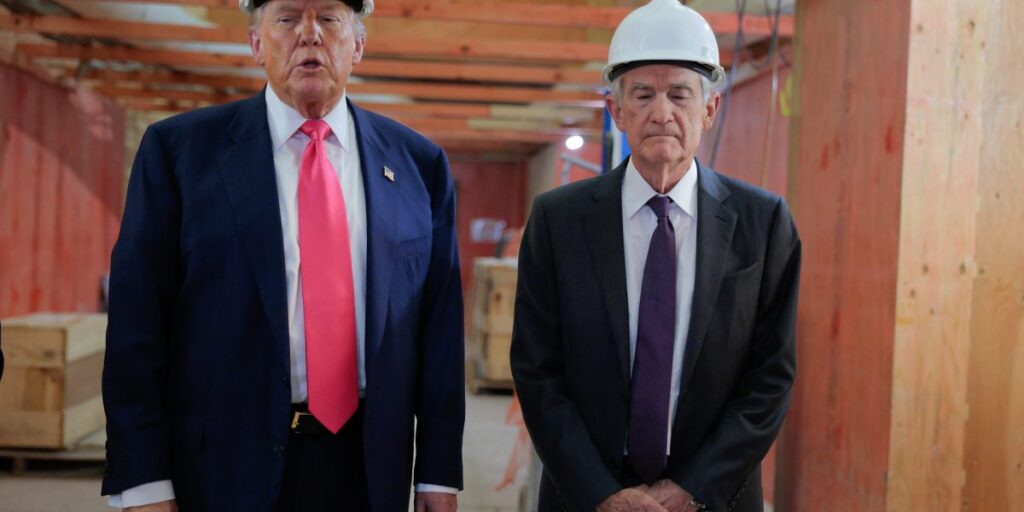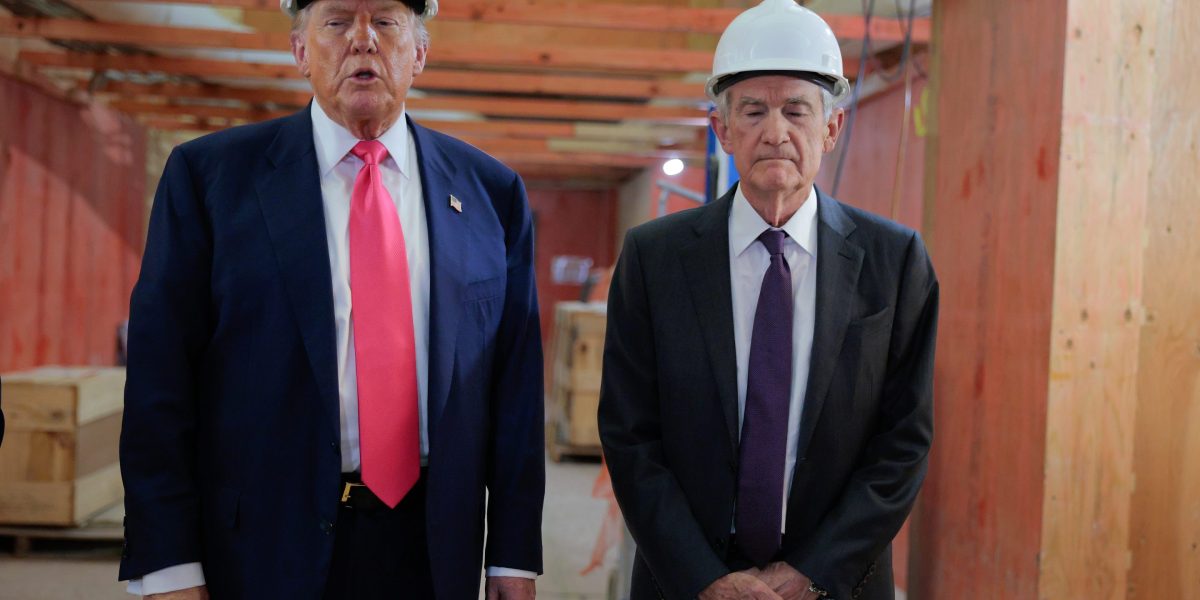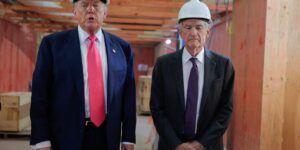Jerome Powell’s Federal Reserve holds rates steady despite immense pressure from Trump to cut, cut, cut
The Fed cited the economy’s resilience as part of its motivation for maintaining rates.


The Federal Reserve maintained rates on Wednesday, holding up against the pressure of President Donald Trump and his recently escalated rhetoric.
The Fed, while it brought down rates several times last fall, has stayed the course following the past four Federal Open Market Committee meetings. On Wednesday, the Fed did the same, holding interest rates between 4.25% and 4.5%, down from their peak over the past two years but still higher than pre-COVID levels of between 1.5% and 1.75%. In its decision, the Fed cited low unemployment and a solid labor market in its decision to hold rates steady.
Wednesday’s decision included two dissenting votes from the majority, Fed governors Michelle
Bowman and Christopher Waller. It is the first time in more than 30 years that two governors have dissented in a single meeting.
The U.S. economy has maintained some resilience despite analyst warnings about impending financial turmoil partly caused by Trump’s tariffs. The unemployment rate fell slightly to 4.1% in June and has remained basically stable over the past 12 months. Meanwhile, annualized second quarter GDP growth increased 3%, bouncing back from the 0.5% contraction in the first quarter.
This combination of stable unemployment and a return to GDP growth likely played into the Fed’s preference for keeping rates unchanged, despite recent skepticism over data published by the Bureau of Labor Statistics, said Luke Tilley, a former Philadelphia fed adviser and chief economist at Wilmington Trust.
“When they see the unemployment rate remaining low, when GDP has bounced back to a positive, when they don’t see any imminent problems, then they’re really reluctant to start cutting, or even say that they’re going to be cutting, because it’s much harder to unring that bell once they say markets are sort of off to the races,” Tilley told Fortune.
At the same time, the most recent GDP number shows weakness when stripped down to the core components of consumer spending and business investment, Van Hesser, chief strategist at the Kroll Bond Rating Agency, told Fortune. Core inflation, which excludes volatile food and energy prices, also increased to 2.9% in June, up from 2.8% the prior month.
While concerns about unemployment have been at the forefront for the Fed in recent months, potential signs of lagging growth are bringing more equilibrium than before to the Fed’s dual mandate, said Hesser.
Trump’s tariff policies are likely to weigh on consumers and businesses in the second half of the year, and the Fed is likely waiting for more data to assess these effects. Still, Hesser said despite Wednesday’s rate cuts, he believes the Fed will cut rates later in the year, possibly at its last meeting of the year in December.
“I would expect to hear some commentary today acknowledging that the risks of inflation and the risks of to the labor market, which is really growth, are coming into better balance, and so it kind of sets up for what we’ve expected, which is, fourth quarter rate cuts—two cuts of 50 basis points,” he said.
As the Trump administration continues to negotiate trade deals with its allies, including, most recently, with the EU, the threat of tariffs and their effects on inflation has worried market onlookers. On Wednesday, Trump said he would impose a 25% tariff on imports from India because of the country’s high tariffs on U.S. goods. Trump also claimed India buys much of its military equipment and energy from Russia, which warranted an unspecified “penalty.”
Since before he was elected President in November, Trump has continuously criticized Powell and the Fed for not dropping interest rates as fast as he would like. Trump has ramped up his rhetoric recently by repeatedly wishing for Powell to resign and insulting him as “Mr. Late” and “one of my worst appointees,” among others. The president has also seized upon a previously scheduled remodel of the Federal Reserve’s headquarters in Washington D.C. to publicly shame Powell and hint at his possible dismissal.






